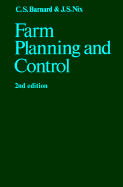Book contents
- Frontmatter
- Contents
- Notice to readers
- Preface to the first edition
- Preface to the second edition
- Selected metric conversion factors
- Part I The organisation of resources
- Part II The organisation of enterprises
- 6 An introduction to enterprise organisation
- 7 Livestock yield and fixed costs
- 8 Yield, variable costs and optimal feed conversion
- 9 The selection of feedstuffs
- 10 The influence of season on livestock production
- 11 The provision of replacements
- 12 Crops and cropping
- Part III The combination of enterprises
- Part IV The control of resources and enterprises
- Selected further reading
- Index
8 - Yield, variable costs and optimal feed conversion
Published online by Cambridge University Press: 01 June 2011
- Frontmatter
- Contents
- Notice to readers
- Preface to the first edition
- Preface to the second edition
- Selected metric conversion factors
- Part I The organisation of resources
- Part II The organisation of enterprises
- 6 An introduction to enterprise organisation
- 7 Livestock yield and fixed costs
- 8 Yield, variable costs and optimal feed conversion
- 9 The selection of feedstuffs
- 10 The influence of season on livestock production
- 11 The provision of replacements
- 12 Crops and cropping
- Part III The combination of enterprises
- Part IV The control of resources and enterprises
- Selected further reading
- Index
Summary
The most profitable level of output from an animal is determined by the interplay of variable costs and yield (see Chapter 2, pages 26–30, for the principles determining how much to produce). Adherence to the simplifying assumption of the last chapter, that variable costs per unit output remain the same whatever the yield, would imply that, once fixed costs were covered, profit would rise at a constant rate proportional to additional output, until the yield capacity of the animal was reached. In short, the maximum yield of which the animal was capable would always be the most profitable. That this is not necessarily so acknowledges that at some stage diminishing returns are encountered, so that the most paying yield becomes that where the value of a unit of output is just matched by the cost of the variable input required to obtain it. To proceed beyond this point results in extra variable costs exceeding the value of extra output, so that profit begins to fall.
If the short-term view is still taken, that the production ration is the only significant variable cost, the problem facing the producer is one of increasing food input step by step until the cost of the last unit is just recouped by the output it stimulates. At this point the margin between the total cost of the production ration and total returns is greatest and, if fixed costs are deducted, the profit per animal is also highest.
- Type
- Chapter
- Information
- Farm Planning and Control , pp. 181 - 202Publisher: Cambridge University PressPrint publication year: 1980



